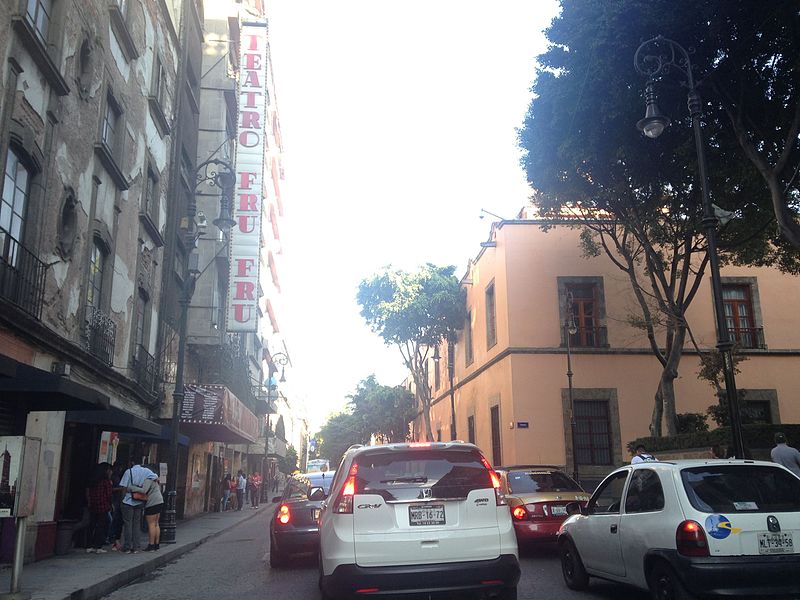
The Teatro Fru Fru has been a landmark, even a notorious one, since it was founded way back in 1899. It’s been re-habbed and re-furbished and re-named so many times that it’s perhaps a surprise that it’s held onto its history as well as it has.
Few people today remember that the site once held part of the enormous Gran Teatro Nacional. Built between 1840 – 1844, it dominated the theater scene for the entire second half of the 19th century. Unfortunately, they tore down the Grand National at the end of the 19th century so that 5 de Mayo street could be extended.
The Teatro Renacimiento, founded shortly before, opened on a fraction of the old theater’s footprint. By 1907, the wealthy Francisco Cardona bought it and renamed it the Teatro Virginia Fábregas, for his wife. It remained one of the city’s leading stages until 1933. Rechristened the Teatro Mexicano, it had been the nicest theater in the city, and the first with electric lighting. But the Teatro Mexican was closed for extended periods. Ms. Fábregas died in 1950. The following decade saw her former-namesake shuttered until 1957. Always believed to have been one of the most haunted structures in the city, many of these legends may begin during this period of dereliction.
Dramatic as any theater interior should be, this one is deep and the boxes along both wall remain inspiring. The stage at night hosts the footsteps of unseen performers from long forgotten plays. Human, or near-human figures may even appear there. Performers believe they need to place a treat in the tray leveled by the demon figure near the entrance. Technically he’s more of a horned fawn, but those who fail to make a donation are not likely to see their performances succeed.
La Tigresa
When the theater finally reopened in 1957 it operated only intermittently. The big change came with the property’s 1973 purchase by singer and actress Irma Serrano, a.k.a.; La Tigresa. It was she who re-named it Teatro Fru Fru. The re-opening presented a controversial play called Nana, based on an Emile Zola story of the same name. La Tigresa, who produced and starred in the performance, was already a controversial figure. “Ordered to jail” in 1967 by Mexico’s First Lady, one Guadalupe Borja, for having serenaded the president, Gustavo Díaz Ordaz. They’re rumored, even to this day, to have been romantically involved.
The theater has since then had several long-running stage successes. Still, it’s continued to close for long periods over these past nearly four decades. The adults-only “Midnight Theater” concept in the early 1980s only furthered the Fru Fru’s reputation as a “venue of ill-repute.” By today’s standards, performances were of high quality and probably rather tame.
While the exterior is in a state of some deterioration, the interior is magnificent. Like many struggling theaters, the Fru Fru has more recently hosted lots of famous rock acts. It was even briefly operated as a nightclub. Victims of Doctor Brain, Natalia Lafourcade, and the Dresden Dolls have all famously performed within its walls. It’s also frequently the host for major events for the city’s extensive LGBT community.
Most recently, it’s been the setting for domestic and international music videos and even for films. If you’re lucky, you may get to see a performance here. Seldom as tawdry as the venue’s reputation might suggest, in fact, management today is referring to the theater as a “performance art theater.” If history is a judge, it fits that bill to a tee.
 albertorico_teatrofrufru@hotmail.com
albertorico_teatrofrufru@hotmail.com
 (55) 4202 3788
(55) 4202 3788
 https://www.facebook.com/pages/Teatro-Fru-Fru/215265188488364
https://www.facebook.com/pages/Teatro-Fru-Fru/215265188488364

0.04 kms.
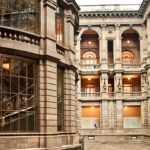
0.07 kms.
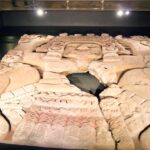
One of the most important sites in the city, even today, don't miss the chance to visit the Templo Mayor.

There's no center like the very center, and in Mexico City, that means el Zócalo!

Mexico City's most iconic skyscaper, Latinoamericana is one of it's most beloved too.
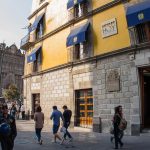
A museum dedicated to one of the oldest institutions in the hemisphere and its long role in Mexico City.
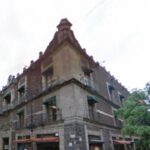
Even with a McDonald's, one of the most prestigious addresses on calle Madero shines out from the past.